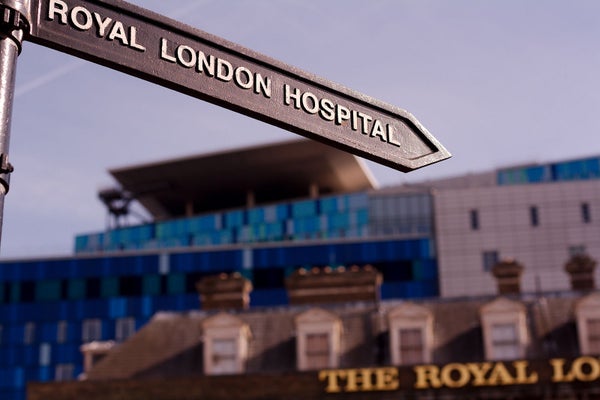This article was published in Scientific American’s former blog network and reflects the views of the author, not necessarily those of Scientific American
More than half of medical facilities in London are blanketed with air pollution at levels in excess of legal limits, according to new research published jointly this month by Kings College London and the UK Health Alliance on Climate Change. This dirty air poses a health risk to healthcare workers and patients throughout the city.
Air pollution has been linked to many diseases including cancer, asthma, stroke and heart disease, diabetes, obesity, and aspects of dementia. According to the Royal College of Physicians report from 2016, types of air pollution including fine particles and nitrogen oxides (NOx) damage our health throughout our entire lifetime, from when we are still in the womb through old age [1]. Not only is air pollution harmful to babies and young children as their hearts and lungs develop, but also for older adults and those with pre-existing conditions who need to regularly go to health centers for care and treatment.
As previously discussed here on Plugged In, the energy sector is the primary source of key types of air pollution around the globe. According to the International Energy Agency (IEA), the energy system is responsible for “85% of particulate matter and almost all of sulfur oxides and nitrogen oxides” released into the air each year.
On supporting science journalism
If you're enjoying this article, consider supporting our award-winning journalism by subscribing. By purchasing a subscription you are helping to ensure the future of impactful stories about the discoveries and ideas shaping our world today.
In the United Kingdom, an estimated 40,000 people die prematurely each year from breathing dirty air [2] air. Almost one in four of these people live in London where air pollution levels are currently in excess of legal limits set by the European Union [3]. Previous work by Kings College London has identified the cause of these premature deaths, including road vehicles, which play a major role in London’s pollution woes leading to initiatives including the Low Emission Zone in the city’s center.
In their new analysis, Kings College London looked at the quality of the air for 2200 National Healthcare System (NHS) facilities including hospitals, GP centres, clinics, and general health facilities using data from the Greater London Authority (GLA) and Transport for London (TfL). The location of each medical facility was intersected with the air quality concentration points from Kings College London’s “KCL urban model” to determine which of the medical facilities might be located in areas where the air was particularly dirty.
Overall, a distinct majority (74%) of medical facilities in inner London and 41% of those in outer London were located in areas with nitrogen oxide (NOx) air pollution is currently above the legal limit. Included in these facilities are several of England’s largest acute care facilities and teaching hospitals.
Go here (link) to read more about this research, or to explore the results using an interactive map built by The British Medical Journal (BMJ), Kings College London, and the UK Health Alliance on Climate Change.
[1] http://www.euro.who.int/en/health-topics/environment-and-health/air-quality/publications/2013/review-of-evidence-on-health-aspects-of-air-pollution-revihaap-project-final-technical-report and https://www.rcplondon.ac.uk/projects/outputs/every-breath-we-take-lifelong-impact-air-pollution
[2] https://www.rcplondon.ac.uk/projects/outputs/every-breath-we-take-lifelong-impact-air-pollution
[3] https://www.kcl.ac.uk/lsm/research/divisions/aes/research/ERG/research-projects/HIAinLondonKingsReport14072015final.pdf
